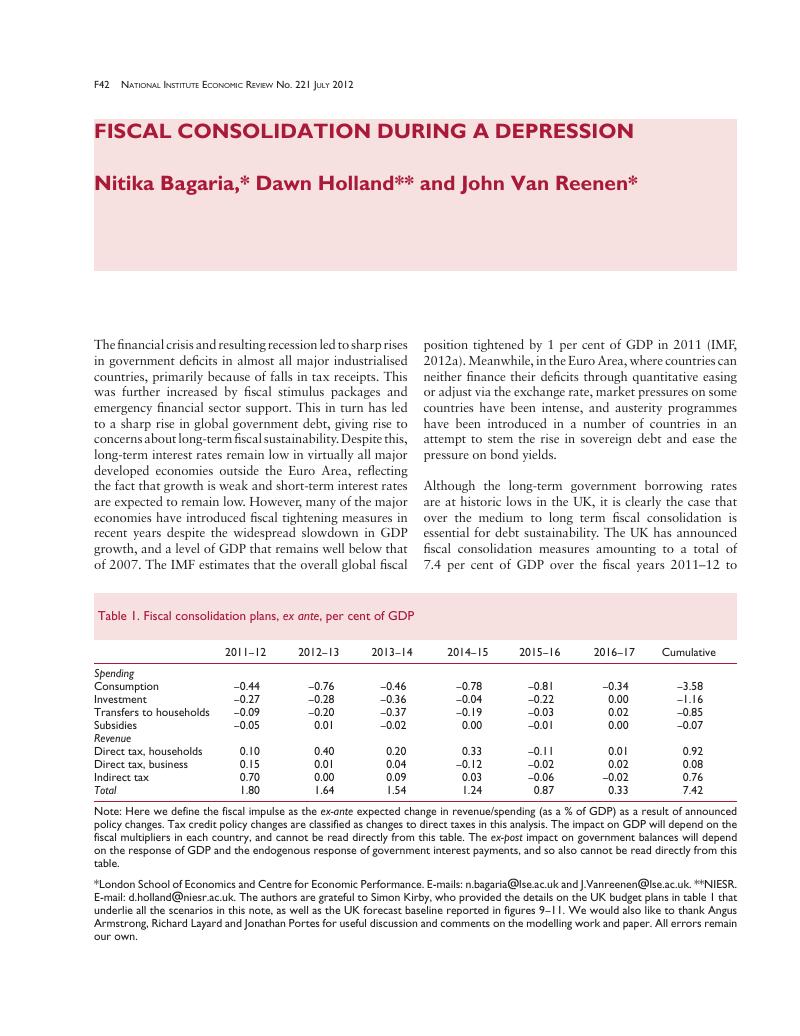Crossref Citations
This article has been cited by the following publications. This list is generated based on data provided by
Crossref.
Kirby, Simon
and
Lisenkova, Katerina
2012.
Prospects for The UK Economy.
National Institute Economic Review,
Vol. 222,
Issue. ,
p.
F41.
Holland, Dawn
and
Portes, Jonathan
2012.
Self-Defeating Austerity?.
National Institute Economic Review,
Vol. 222,
Issue. ,
p.
F4.
Efthimiadis, T.
Papaioannou, S.
and
Tsintzos, P.
2013.
Economic growth in Greece: the cost of a failed adjustment programme.
Applied Economics Letters,
Vol. 20,
Issue. 11,
p.
1076.
Crafts, Nicholas
2013.
Returning to Growth: Policy Lessons from History*.
Fiscal Studies,
Vol. 34,
Issue. 2,
p.
255.
Kirby, Simon
2013.
Prospects for the UK Economy.
National Institute Economic Review,
Vol. 226,
Issue. ,
p.
F46.
Pessoa, João Paulo
and
Van Reenen, John
2014.
The UK Productivity and Jobs Puzzle: Does the Answer Lie in Wage Flexibility?.
The Economic Journal,
Vol. 124,
Issue. 576,
p.
433.
2015.
Capitalism and the World Economy.
p.
171.
Clift, Ben
2015.
The British Growth Crisis.
p.
151.
Whalen, Charles J.
and
Reichling, Felix
2015.
THE FISCAL MULTIPLIER AND ECONOMIC POLICY ANALYSIS IN THE UNITED STATES.
Contemporary Economic Policy,
Vol. 33,
Issue. 4,
p.
735.
Armstrong, Angus
Carreras, Oriol
Kirby, Simon
Meaning, Jack
and
Piggott, Rebecca
2015.
Greece and the Euro Area.
National Institute Economic Review,
Vol. 233,
Issue. ,
p.
F44.
Kirby, Simon
2015.
The Macroeconomic Implications of the Parties’ Fiscal Plans.
National Institute Economic Review,
Vol. 231,
Issue. ,
p.
F4.
Wren-Lewis, Simon
2015.
The Macroeconomic Record of the Coalition Government.
National Institute Economic Review,
Vol. 231,
Issue. ,
p.
R5.
Bukowski, Hubert
2015.
Fiscal Consolidation As a Self-Fulfilling Prophecy on Fiscal Multipliers.
SSRN Electronic Journal,
Bargawi, Hannah
and
Cozzi, Giovanni
2017.
Engendering Economic Recovery: Modeling Alternatives to Austerity in Europe.
Feminist Economics,
Vol. 23,
Issue. 4,
p.
225.
Ochotnický, Pavol
and
Jankech, Jozef
2020.
Successful Concepts of Post-Crisis Public Debt Reduction Policy.
Politická ekonomie,
Vol. 68,
Issue. 2,
p.
168.
